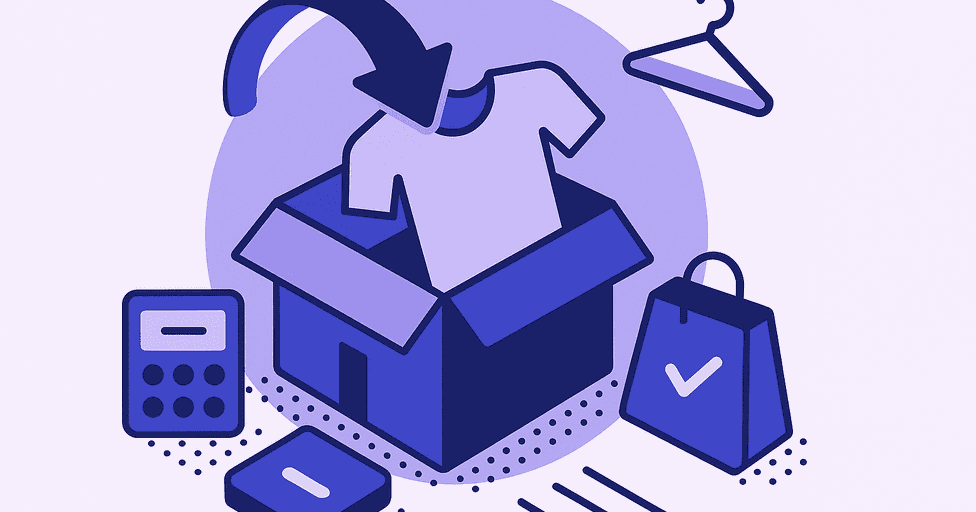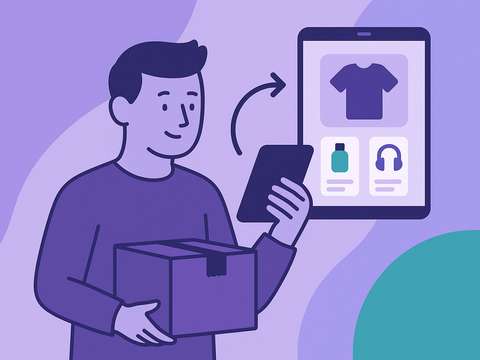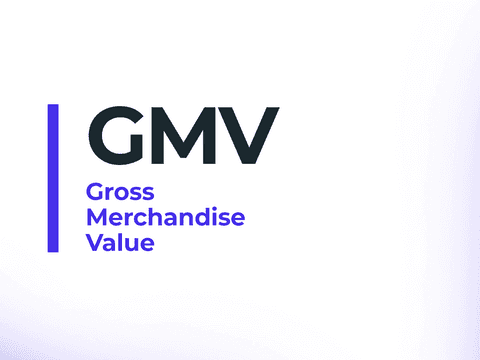Returns are one of the biggest challenges in the fashion industry. Managing the logistics process takes time and resources, and sometimes it only results in losing a sale we thought was complete.
Looking at the numbers, online apparel return rates hover around 24–32%. In 2023 alone, global fashion e-commerce returns were estimated to cost retailers over $150 billion.
Much of this is driven by size mismatches, unmet expectations, and shopping habits like bracketing—where customers order multiple sizes with the intention of returning most of them.
At Outvio, we have extensive experience managing fashion logistics and returns, and we've gathered the best strategies and practices that apparel stores can use to reduce returns without sacrificing the customer experience.
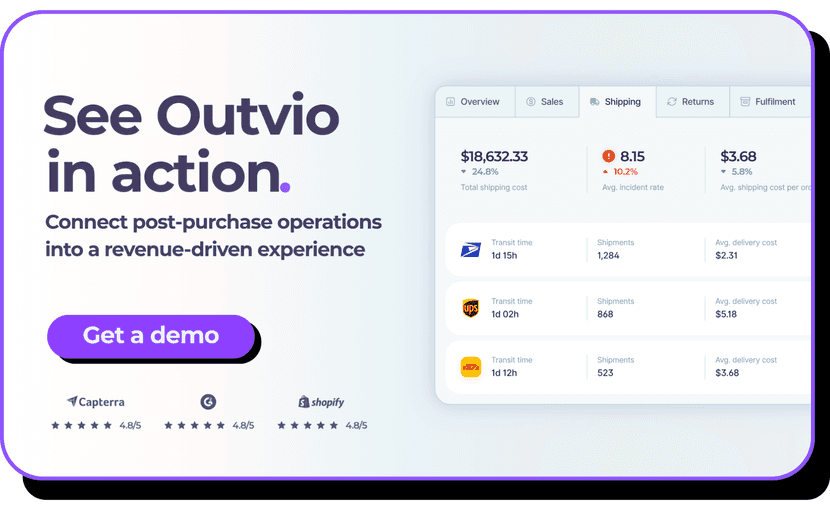
Best strategies to reduce returns in the fashion industry
1. Incentivize product exchanges over refunds
One of the fastest ways to reduce revenue loss in the clothing, fashion, and apparel industry is to make exchanges more appealing than refunds.
While a refund severs the relationship with that specific transaction, an exchange keeps the revenue inside the business and maintains engagement with the shopper.
According to our data, simply putting "Exchange" as the first option in your return portal can increase exchange rates by 15–25%.
The strategy consists of offering a small discount for choosing store credit over a traditional refund, and using a smart system like Outvio to display higher-value products during the return process. This way, the return can turn into a new sale.
A good example is Popa Brand, a Spanish artisanal footwear brand. By implementing Outvio’s exchange-focused returns flow, they unlocked several key improvements and saved nearly €200,000 by reducing fashion returns and turning them into high-value product exchanges during the first 12 months.
The return system automatically guided shoppers toward alternative products during the exchange process, allowing them to select new sizes or models with a single click.
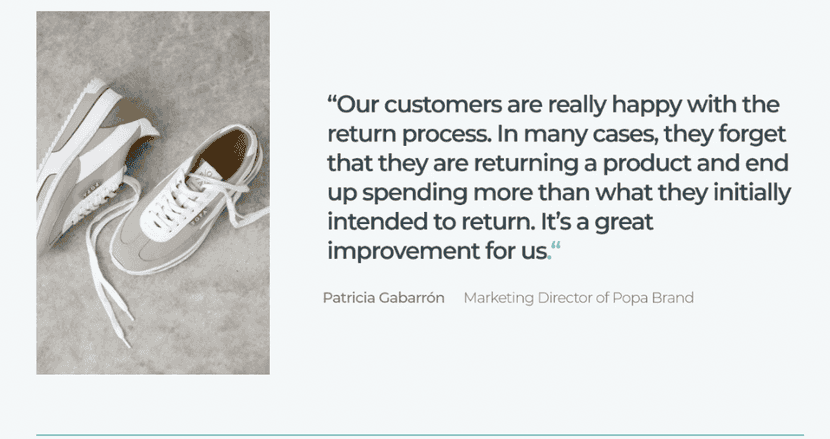
2. Publish detailed, device-responsive size charts
Sizing issues usually start with generic charts that describe the garment but not the fit.
Create charts from actual measurements and summarize them as a “fit promise” that tells people how the piece wears on different bodies—for instance, “slim in the shoulders, relaxed at the waist.”
Put these charts directly on the product page in responsive HTML so they load fast on mobile and desktop, allow one‑tap switching between centimeters and inches, and open from a visible “Find your size” trigger rather than a buried modal.
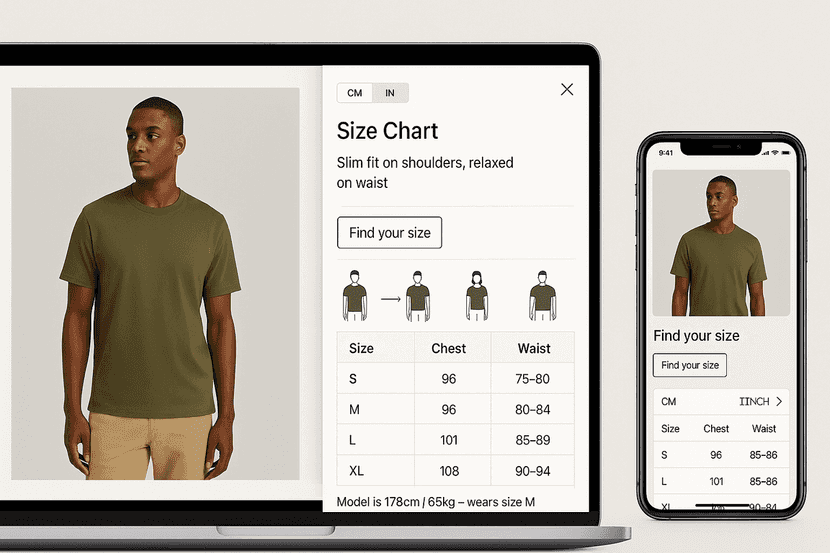
Pair the chart with a 30‑second self‑measurement guide and, where relevant, separate guidance for width and rise in footwear and bottoms; note toe shape, last width, and whether customers between sizes should move up or down.
Ground expectations with model data that includes height, weight, measurements, and the size worn plus a one‑line fit note.
Then watch the right metrics: the size‑related return rate for each SKU, the conversion lift when shoppers view the chart versus when they don’t, time spent engaging with the chart on mobile, and the split between size exchanges and size refunds.
3. Strengthen quality control & protective packaging
Wrong items sent to the wrong address result in failed deliveries.
What we look for in logistics is that each package contains exactly what the customer purchased: the correct SKU, in the correct size and color, and in the correct quantity.
To achieve this, a specific quality control is required at the packing table. In a manual workflow, the person preparing the order picks the items and, before closing the box, compares the packing slip with the product labels.
They scan the SKU barcode, visually verify the size and color, confirm the quantities, and only then close the package.
This process works, but when volume increases, typical errors due to fatigue or rushing begin to appear.
That’s why the most reliable method is to rely on picking & packing software. With Outvio, for example, the person scans each item and the system detects whether it matches the current order, preventing packages from containing incorrect items.
4. Optimize return windows & policies by customer segment
Not every shopper should get the same return window.
Use recent purchase frequency, monetary value, and historical return behavior to create clear segments.
- Loyal, low‑return customers—say three or more orders in the past year with a return rate under fifteen percent—can have a 30–45 day window, free returns, and instant credit.
- New shoppers buying high‑risk, easy‑to‑wardrobe items such as occasionwear can be placed on a shorter 10–14 day window with tags‑on conditions and stricter checks.
Be transparent by showing the exact last‑return date and the shopper’s current benefits right on the product page and inside the return portal (“You have 30 days because you’re Gold tier”).
Automate eligibility so instant credit and free labels appear only when the account truly qualifies.
On apparel that’s prone to wardrobing, use tamper‑evident tags and a brief, friendly explanation that the tag must remain attached for returns. Brands that adopt this logic routinely cut fraudulent returns by up to ten percent while keeping loyalists happy.
Watch return rate by segment, the number of wardrobing flags and disputes you win, CSAT on return experiences, and repeat purchase rate after a return to ensure the policy is helping, not harming.
5. Add a quick FAQ or chatbot on the product page to resolve common doubts
Many refunds in fashion come from hesitation, not product defects.
A shopper likes the item but isn’t sure if it’ll arrive in time, if it runs small, or how the material feels. If those doubts aren’t resolved, they either drop off, or buy and return.
Another well-proven tactic to not only reduce returns but also decrease cart abandonment and drive new sales is to embed a smart FAQ or chatbot directly on the product page to answer the most frequently asked questions in the fashion industry.

If someone asks, “Will this arrive by Friday?”, the chatbot checks your logistics and gives a real delivery estimate. If they’re unsure about sizing, it shows fit tips, size charts or return conditions.
Buyers can even ask for product recommendations or get help with anything else—right there, before buying.
Find out how to reduce eCommerce returns using a chatbot.
Outvio, the best solution to reduce fashion and clothing returns
Outvio is a software solution that lets you fully automate the management of exchanges and returns, while implementing powerful strategies to reduce refunds and turn them into revenue.
With its eligibility rules engine, automated exchanges for any other product or variant, and store credit system, Outvio ensures that your customers are more likely to exchange an item instead of returning it.
You can also create custom return policies based on customer type, region, product, or order—helping you increase profitability or reduce fraud, depending on your specific business needs.
The brands already using Outvio see the difference: fewer returns to handle, more revenue retained, and more time to focus on what really matters—growing the business.
Discover why Outvio is the best solution for reducing apparel and fashion returns. Book a free demo today.

